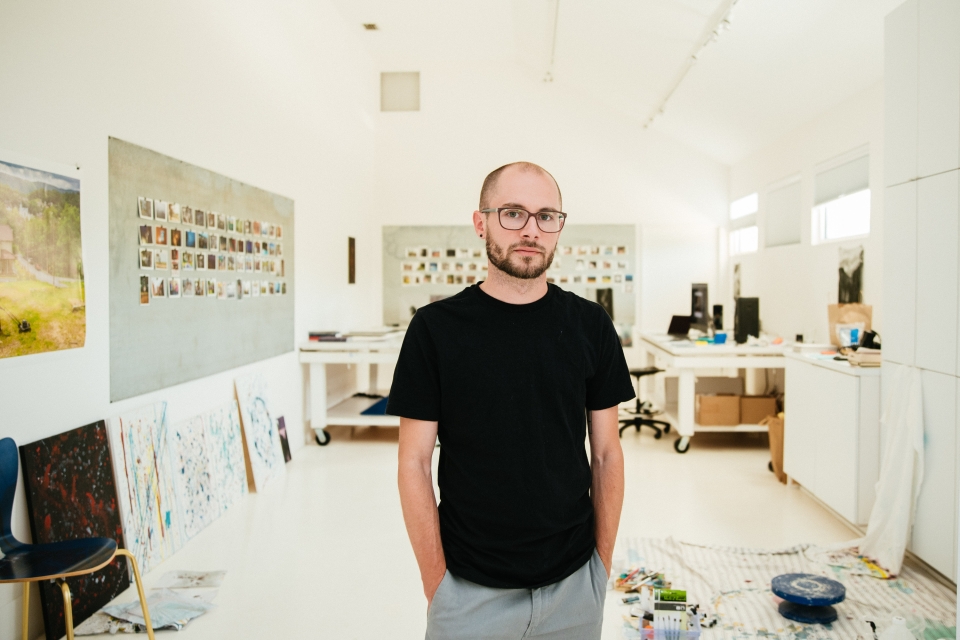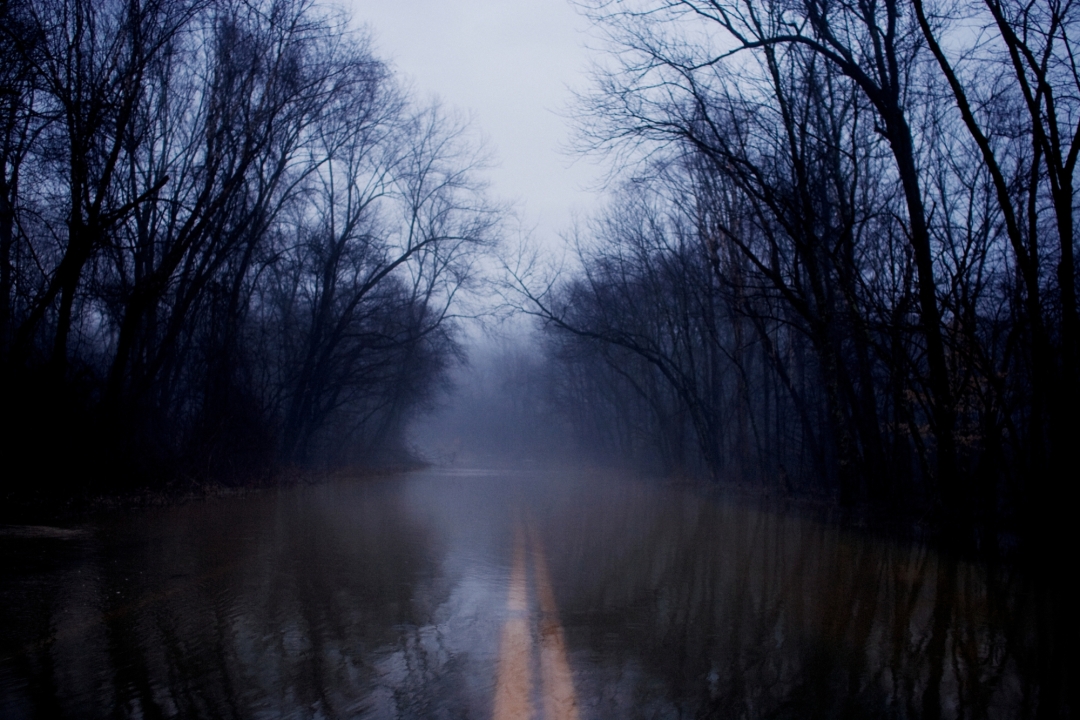GW photojournalism professor Matt Eich helps students learn how to build a photographic narrative.
Originally published on GWToday. April 21, 2022. By Greg Varner
When Matt Eich presents students in his Sequencing and Narrative Strategies course with a selection of at least 1,000 photographic images and assigns them to narrow the group down to 10 images to tell a story of their choosing, he’s always amazed by how differently each student rises to the challenge.
An expert in how images come together to present a narrative, Eich is an assistant professor in the photojournalism program in the Corcoran School of the Arts and Design, housed in GW’s Columbian College of Arts and Sciences.
“Students begin thinking about how multiple images come together to form narratives, stories and essays,” he said, adding that they learn “how to express bigger ideas than you can through a single frame.”
Eich has won wide recognition for his work. His images have appeared in various publications such as the Guardian (UK), Esquire, The New York Times and The Atlantic. In October 2021, his “exceptional vision” was honored by a prestigious award from Aperture and Google’s Creator Labs. He has published several monographs under the rubric, The Invisible Yoke, currently in three volumes, all from independent Swiss publishing firm Sturm & Drang, with a fourth and final volume due out this year.
Each volume, Eich said, “is thinking about issues embedded in the American landscape and social systems.” The first, “Carry Me Ohio” (2016) presents images made in southeastern Ohio, in the foothills of Appalachia, over a 10-year period beginning in 2006. He shows the effects of the Great Recession of 2008 and surge of the opioid epidemic as industries that had supported the region disappeared, leaving few job opportunities.
The Road Home (as the winter snows melt), Mineral, Ohio. 2007. From the series, Carry Me Ohio. Photograph by Matt Eich
The next volume, “Sin & Salvation in Baptist Town” (2018), is set in Greenwood, Mississippi, and considers racism, segregation and the persistent socioeconomic divide. It was followed by “The Seven Cities” (2020), looking at the Hampton Roads, Virginia, region where he grew up.
“That’s a place that is politically and economically defined by the military-industrial complex,” Eich said. “It’s home to the largest naval base in the world.” The region is now threatened by rising sea levels.
“Most of the homes in Larchmont, the neighborhood in Norfolk where I grew up, have been raised by FEMA to give them some elevation, but all it takes is a full moon and a high tide to flood a whole street,” he said. “A little wind from the wrong direction or a Nor’easter would be enough to cause some major issues throughout the city.”
The final volume in the series, “We the Free,” expands his geographic scope, looking at America over a 15-year span including the recession of 2008, the aftermath of Michael Brown’s death in Ferguson, Missouri, and the Unite the Right rally in Charlottesville, Virginia.
Whereas Eich can work for a period of years to create such a book, students in his class Narrative and the Art of the Photography Book are severely constrained by time and other factors.
“It's hard in one semester to tell students that making and thinking about the work are two separate mechanisms,” Eich said. “They need to be given separate time and space. I want students to be able to respond to things as they’re unfolding and then move over into a separate space where they can live with the work. That means making prints of your photographs and putting them up somewhere you can confront them on a regular basis. They start to talk to one another, and that’s how these narratives sometimes begin to emerge.”
His interest in photography goes back to his childhood, Eich said, when his grandmother had Alzheimer’s disease, and he realized photography could make fragile memories at least somewhat more sturdy.
“My grandfather took me on a road trip and loaned me a point-and-shoot camera,” Eich said. “I still have this very distinct memory of getting the film back from a Walmart. I had this picture of a wooden fencepost rotting in a field in Tennessee, and when I saw the print, there was this feeling of being transported back to that place and pushing a button. That clued my brain in to the idea that photography was capable of some small form of magic, able to emotionally encapsulate something, to transport somebody.”
Thinking about the connection between personal memory and collective memory, Eich began to consider what he calls “our tendency to amnesia as a society” and how it “has allowed us to inflict damage on one another and ourselves and to claim ignorance of our sins while allowing a lot of social issues to fester.”
While it may sound depressing to witness such damage, there is cause for at least a glimmer of optimism: After all, the witness has a camera.



